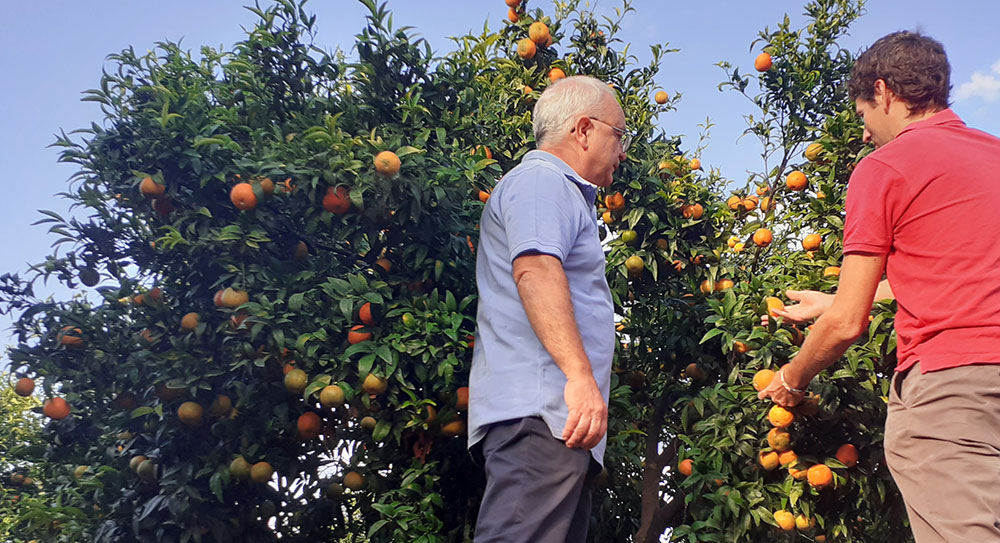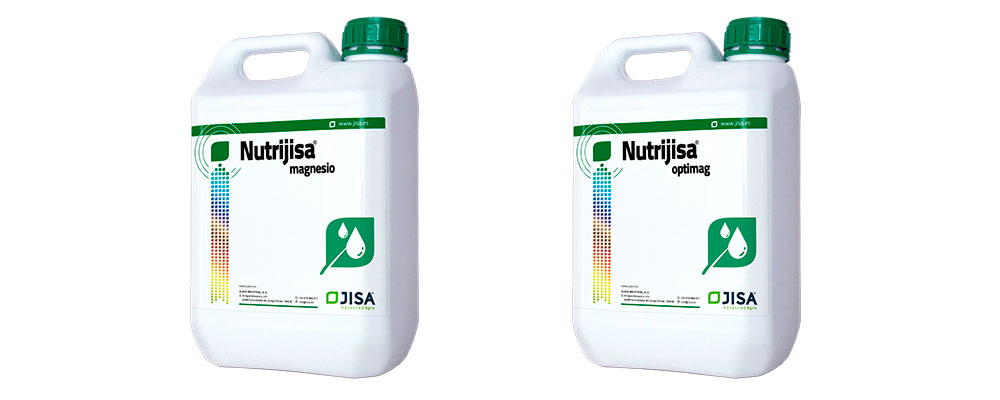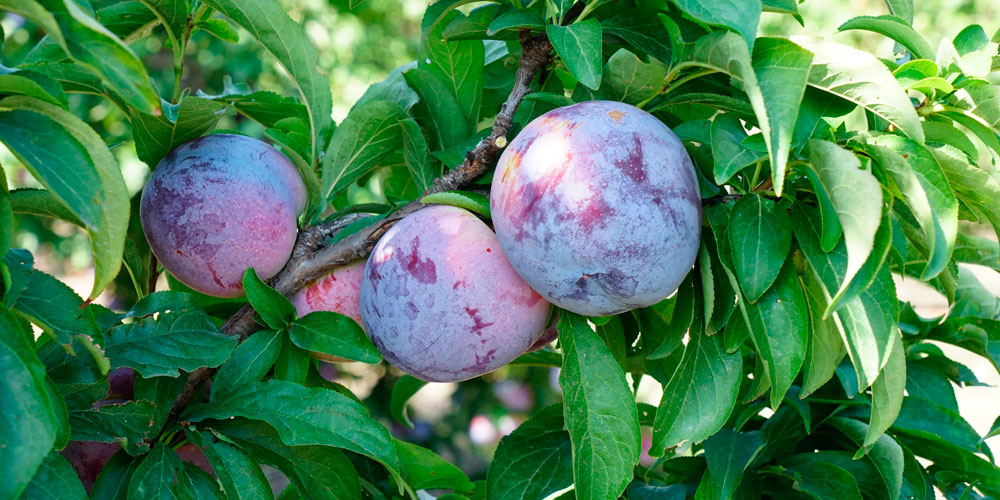Magnesium (Mg) promotes good plant growth, being an essential nutrient that intervenes decisively in the formation of chlorophyll, necessary for photosynthesis.
Making a brief history of magnesium as a fertilizer, this element was discovered in 1755 by the Scottish chemist Joseph Black, being isolated (as metallic magnesium) for the first time in 1808 by the English chemist Humphry Davy.
Practically a century later, in the 1920s, magnesium deficiency in plants was recognized, when researchers noticed that plants grown in low-magnesium soils showed symptoms of deficiency, such as yellowed leaves.
But a few years earlier magnesium was already used as a nutrient for plants and in fact, in 1904, the German botanist Julius von Sachs showed that magnesium was an essential element.
Since then, magnesium has been used in the field of plant agronutrition for the proper development of crops, either including it through the application of fertilizers that contain it or fertilizers especially rich in it.
Magnesium in the soil.
The nutrient magnesium (Mg) can be found in soil in different forms, including:
- Ion Mg2+ in the soil solution, which can be directly absorbed by the roots.
- As Mg2+ ion fixed at the cation exchange positions of the soil.
- Frequently in saline soils, forming salts such as sulfate MgSO4.H2O, or magnesium MgCl2.nH2O chloride.
- In certain soil minerals such as dolomite CaMg(CO3)2 or magnesium calcites MgCO3 where Mg partially replaces Ca2+.
- As a structural component of the siliceous crystal lattice of some clays such as vermiculite, montmorillonite (a mineral of the silicate group) or sepiolite.
Under favorable conditions, all this potential of magnesium in the soil allows a gradual release of Mg2+ ions to the soil solution, maintaining rates that are usually sufficient to cover the needs of crops.

How do you absorb and transport magnesium by the plant?
Magnesium is absorbed root as Mg2+ ion dissolved in the soil solution and transported to the aerial part by the xylem together with water and other dissolved mineral salts, either as an ion or bound to organic acids by complex bonds.
In the case of its transport through the phloem, it is rapidly translocated from mature leaves to developing vegetative or fruiting organs.
Precisely, this great mobility of the old parts to young, is what, in case of deficiency, allows to perceive in the adult leaves quickly the symptoms of a magnesium deficiency.
Causes of magnesium deficiency.
Both in horticultural and fruit crops, especially in those considered high yield, magnesium deficiency states in the soil or assimilation problems may occur.
Also in those made in sandy soils with low cation exchange capacity, because Mg2+ ions are usually washed by rainfall and irrigation. This situation can be aggravated if, in addition, the soil enjoys acidity.
In the case of alkaline soils, if magnesium hydroxide (Mg(OH)2) is formed, it cannot be absorbed by the roots.
When there is an excess of potassium (K) richness in the soil solution, it also contributes to magnesium deficiency in the plant by antagonizing potassium. This is usually given when an excess of potassium fertilization is carried out.
Another cause occurs in carbonate-rich soils, because they react with their ions and form magnesium carbonate and magnesium bicarbonate, forms in which it cannot be absorbed by the roots.

Symptoms of magnesium deficiency in plants.
As we have advanced, in case of deficiency, the great mobility of magnesium from the old parts of the plant to the young ones, makes this deficiency manifest itself quickly in the adult leaves.
Its symptoms are manifested by foliar chlorosis. Specifically with a yellowness of the limb of the leaves creating a spear shape. This chlorotic zone widens from the apex of the leaf to its base, forming a characteristic triangular area.
The effect of a magnesium deficiency in trees with fruits such as citrus, stone and pome fruit trees, vineyards, avocado, mango, etc. as well as horticultural plants such as tomatoes, peppers, eggplants, … It is usually more intense in the branches with abundant fruiting.
And always, its deficiency symptoms manifested in its old leaves, which can fall prematurely, being partially defoliated.
Magnesium deficiency in fruits does not usually manifest symptoms, although it can affect its quality both in size and harvest.

Products to correct magnesium deficiency in plants.
Among the main agronutritional products used to treat magnesium deficiency are traditional ones such as:
- Magnesium nitrate – Mg(NO3)2.6H2O – A crystalline salt, highly soluble in water. Due to its solubility in water, it is suitable for use in foliar fertilization and fertigation.
- Epsomite – MgSO4.7H2O – With a richness between 15 and 16% of this element. A magnesium sulfate with high solubility in water.
- Kieserite – MgSO4.H2O – With 25 to 30%. Another magnesium sulfate, but less soluble than epsomite.
- Magnesia – MgO – With 90%. A magnesium oxide that is marketed in the form of a fine powder, very insoluble in water.
- Dolomite – CaMg(CO3)2 – With 16 to 22%. Calcium magnesium carbonate that is used in granulated form as fertilizer.
But in addition to them, field technicians have at their disposal more fertilizers, specially formulated for rapid actions, either when this deficiency occurs or its appearance is expected.
JISA fertilizers to correct magnesium deficiency in plants.
As for special formulations of high efficacy, JISA offers in its catalog several options for the magnesium solution according to the fertilization plan established by the technician responsible for the crop. Among them:
- Nutrijisa® Mg based on magnesium complexed by gluconic acid, to facilitate its assimilation by the plant.
- Nutrijisa® Optimag in liquid formulation of complexed calcium, magnesium and boron, prepared for the prevention and correction of deficiency states of these trace elements.
It should also be noted that in JISA foliar fertilizers, in their Jisafol® and Nutriolivo® ranges, magnesium is present in their composition, avoiding with their application the appearance of Mg deficiencies.
Dosage of magnesium deficiency correctors in crops.
As in other cases of deficiencies of certain nutrients, magnesium deficiency should be treated depending on the growing conditions.
One of the factors is the pH of the soil, which will be conditioning if it is in acidic soils with pH below 6.5, close to neutrality or over alkaline with pH higher than 7.5). In these cases, with the incorporation of fertilizers directly into the soil, the choice will depend on whether the irrigation is by drip, flood, bottom, etc. as well as if you want a more or less rapid release of magnesium.
Of course, also the doses to be applied of the different products can vary depending on the age and development of the trees or plants, and if the method of application is foliar.
To give an example and always counting on the criteria of the technician responsible for the crop or advice, in this case the technical team of JISA, with Nutrijisa® magnesium in foliar application the dose can be between 100 to 250 cc/hl, and in irrigation between 5 and 7 l/ha in each application.
Regarding Nutrijisa® Optimag, it is a liquid deficiency corrector of Calcium (CaO 7% w/w) and Magnesium (MgO 3.0% w/w). Its use is recommended to prevent or correct deficiency states and nutritional imbalances of the secondary elements mentioned above. Nutrijisa® Optimag incorporates Boron (0.5% w/w) in its formulation, a third essential element in crops in different phenological phases. Calcium and magnesium are complexed with gluconic acid, so it improves their assimilation and availability by the plant. It can be applied in all types of crops both in foliar spraying and via soil with irrigation water. The dose to be applied ranges from 200 to 300 cc/hl in horticultural crops, strawberries and berries and from 300 to 500 cc/hl in woody crops.
With Jisafol® 11-6-32 + Mg, B and Mo, its contribution by foliar route as a complement to the bottom fertilizers in olive, vine, citrus and other fruit trees can be between 300 to 500 g/hl; in horticultural and strawberry between 200 to 350 g/hl; and in cereals between 300 to 400 g/hl, for example.
As we have advanced, these are examples to situate these concepts, knowing that these doses, method of application and moments, will be conditioned by the characteristics of the crop, as well as the data provided by the foliar or soil analysis.
If you have any questions about magnesium in your growing plants, you can consult with our JISA technical team, we will be happy to advise you… Let’s grow healthy businesses!
